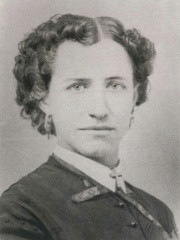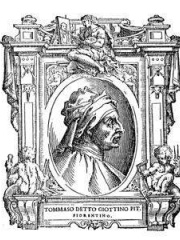PAINTER
Giovanni d'Alemagna

 Giovanni d'Alemagna
Giovanni d'Alemagna
Giovanni d'Alemagna (Italian pronunciation: [dʒoˈvanni daleˈmaɲɲa]; born Johannes Alamanus; c. 1411 – 9 July 1450) was a Venetian renaissance painter of German ancestry, active in Italy, with his brother-in-law Antonio Vivarini on religious paintings in Venice and Padua, that are preserved in the named cities together with those of Vivarini. Read more on Wikipedia
His biography is available in 17 different languages on Wikipedia (up from 16 in 2024). Giovanni d'Alemagna is the 1,600th most popular painter (up from 1,808th in 2024), the 3,347th most popular biography from Italy (up from 3,726th in 2019) and the 256th most popular Italian Painter.
Memorability Metrics
Page views of Giovanni d'Alemagna by language
Among PAINTERS
Among painters, Giovanni d'Alemagna ranks 1,600 out of 2,023. Before him are Laura Theresa Alma-Tadema, Chen Jiru, Sisto Badalocchio, Allan Ramsay, Józef Chełmoński, and Levina Teerlinc. After him are Elizabeth Jane Gardner, Julia Beck, Paulus Bor, Charles Angrand, Ellsworth Kelly, and Józef Mehoffer.
Most Popular Painters in Wikipedia
Go to all RankingsLaura Theresa Alma-Tadema
1852 - 1909
HPI: 57.44
Rank: 1,594
Chen Jiru
1558 - 1639
HPI: 57.44
Rank: 1,595
Sisto Badalocchio
1585 - Present
HPI: 57.44
Rank: 1,596
Allan Ramsay
1713 - 1784
HPI: 57.44
Rank: 1,597
Józef Chełmoński
1849 - 1914
HPI: 57.43
Rank: 1,598
Levina Teerlinc
1510 - 1576
HPI: 57.43
Rank: 1,599
Giovanni d'Alemagna
HPI: 57.43
Rank: 1,600
Elizabeth Jane Gardner
1837 - 1922
HPI: 57.41
Rank: 1,601
Julia Beck
1853 - 1935
HPI: 57.41
Rank: 1,602
Paulus Bor
1601 - 1669
HPI: 57.41
Rank: 1,603
Charles Angrand
1854 - 1926
HPI: 57.39
Rank: 1,604
Ellsworth Kelly
1923 - 2015
HPI: 57.39
Rank: 1,605
Józef Mehoffer
1869 - 1946
HPI: 57.39
Rank: 1,606
In Italy
Among people born in Italy, Giovanni d'Alemagna ranks 3,348 out of 5,161. Before him are Rodolfo Terlizzi (1896), Sisto Badalocchio (1585), Guido Gonzaga (1290), Lorenzo Perosi (1872), Teo Fabi (1955), and Luigi Simoni (1939). After him are Amelita Galli-Curci (1882), Edoardo Bennato (1946), Ivano Bordon (1951), Benedicta Boccoli (1966), Renato Rascel (1912), and Dario Mangiarotti (1915).
Others born in Italy
Go to all RankingsRodolfo Terlizzi
ATHLETE
1896 - 1971
HPI: 57.44
Rank: 3,342
Sisto Badalocchio
PAINTER
1585 - Present
HPI: 57.44
Rank: 3,343
Guido Gonzaga
POLITICIAN
1290 - 1369
HPI: 57.44
Rank: 3,344
Lorenzo Perosi
COMPOSER
1872 - 1956
HPI: 57.44
Rank: 3,345
Teo Fabi
RACING DRIVER
1955 - Present
HPI: 57.43
Rank: 3,346
Luigi Simoni
SOCCER PLAYER
1939 - 2020
HPI: 57.43
Rank: 3,347
Giovanni d'Alemagna
PAINTER
HPI: 57.43
Rank: 3,348
Amelita Galli-Curci
SINGER
1882 - 1963
HPI: 57.42
Rank: 3,349
Edoardo Bennato
MUSICIAN
1946 - Present
HPI: 57.42
Rank: 3,350
Ivano Bordon
SOCCER PLAYER
1951 - Present
HPI: 57.42
Rank: 3,351
Benedicta Boccoli
ACTOR
1966 - Present
HPI: 57.41
Rank: 3,352
Renato Rascel
ACTOR
1912 - 1991
HPI: 57.41
Rank: 3,353
Dario Mangiarotti
FENCER
1915 - 2010
HPI: 57.40
Rank: 3,354
Among PAINTERS In Italy
Among painters born in Italy, Giovanni d'Alemagna ranks 256. Before him are Giacomo Ceruti (1698), Giottino (1324), Paolo Salvati (1939), Bartolomeo della Gatta (1448), Giusto de' Menabuoi (1330), and Sisto Badalocchio (1585). After him are Fyodor Bruni (1799), Domenico Morelli (1826), Theodoric of Prague (1319), Andrea Benetti (1964), Francesco Clemente (1952), and Romanino (1485).
Giacomo Ceruti
1698 - 1767
HPI: 58.52
Rank: 250
Giottino
1324 - 1357
HPI: 58.12
Rank: 251
Paolo Salvati
1939 - 2014
HPI: 57.97
Rank: 252
Bartolomeo della Gatta
1448 - 1502
HPI: 57.96
Rank: 253
Giusto de' Menabuoi
1330 - 1390
HPI: 57.80
Rank: 254
Sisto Badalocchio
1585 - Present
HPI: 57.44
Rank: 255
Giovanni d'Alemagna
HPI: 57.43
Rank: 256
Fyodor Bruni
1799 - 1875
HPI: 57.27
Rank: 257
Domenico Morelli
1826 - 1901
HPI: 57.24
Rank: 258
Theodoric of Prague
1319 - 1380
HPI: 57.18
Rank: 259
Andrea Benetti
1964 - Present
HPI: 56.41
Rank: 260
Francesco Clemente
1952 - Present
HPI: 56.06
Rank: 261
Romanino
1485 - 1566
HPI: 55.62
Rank: 262


































